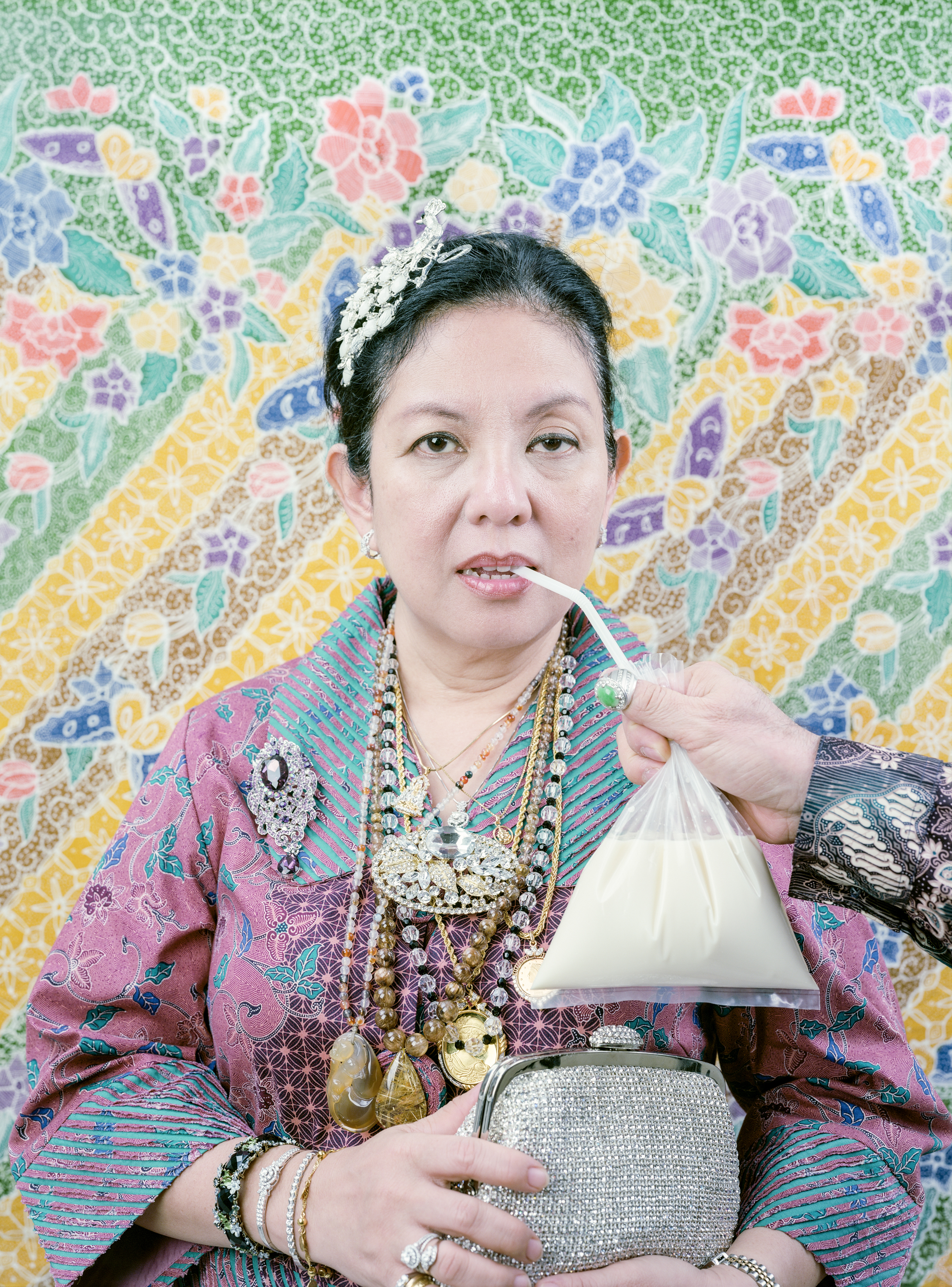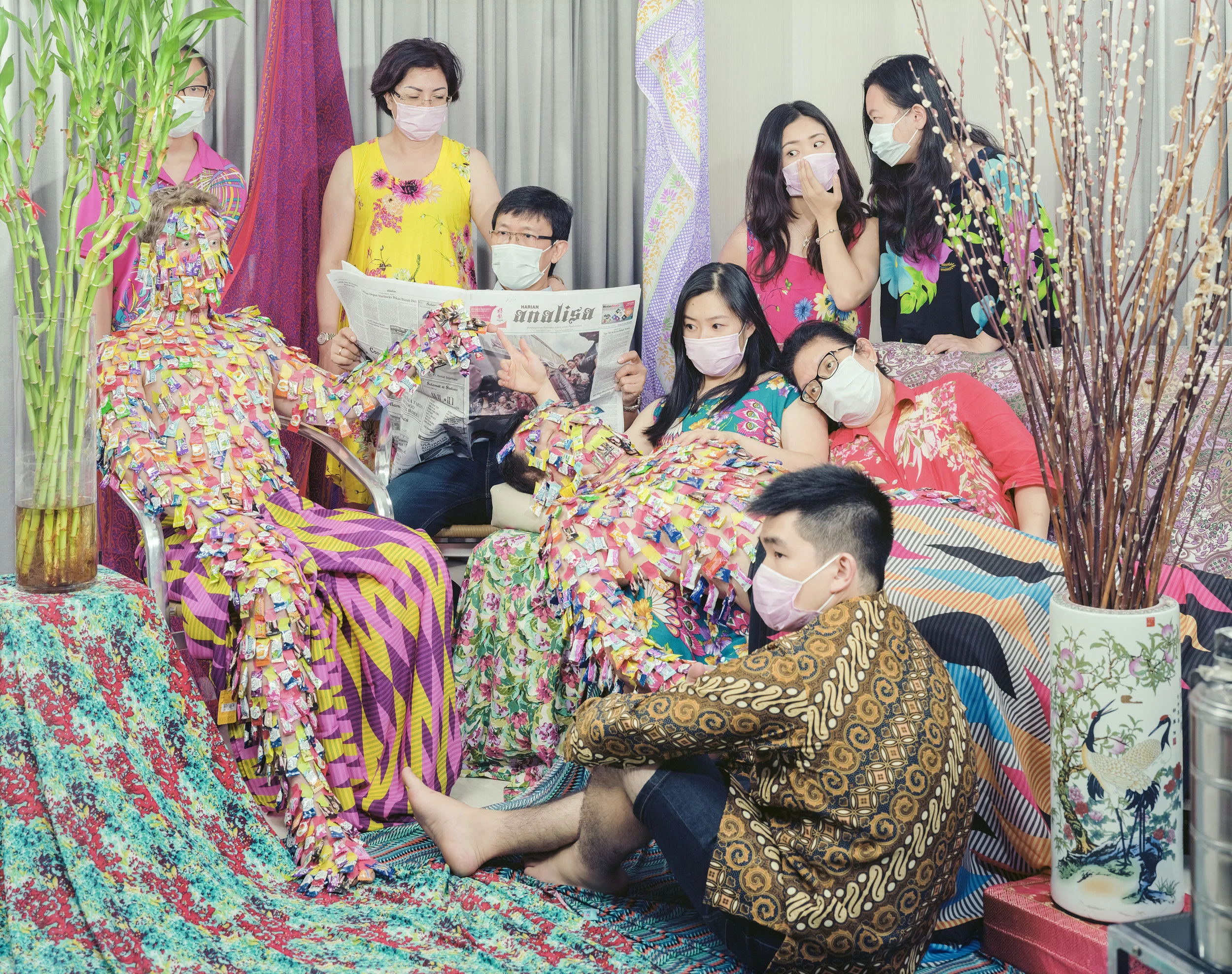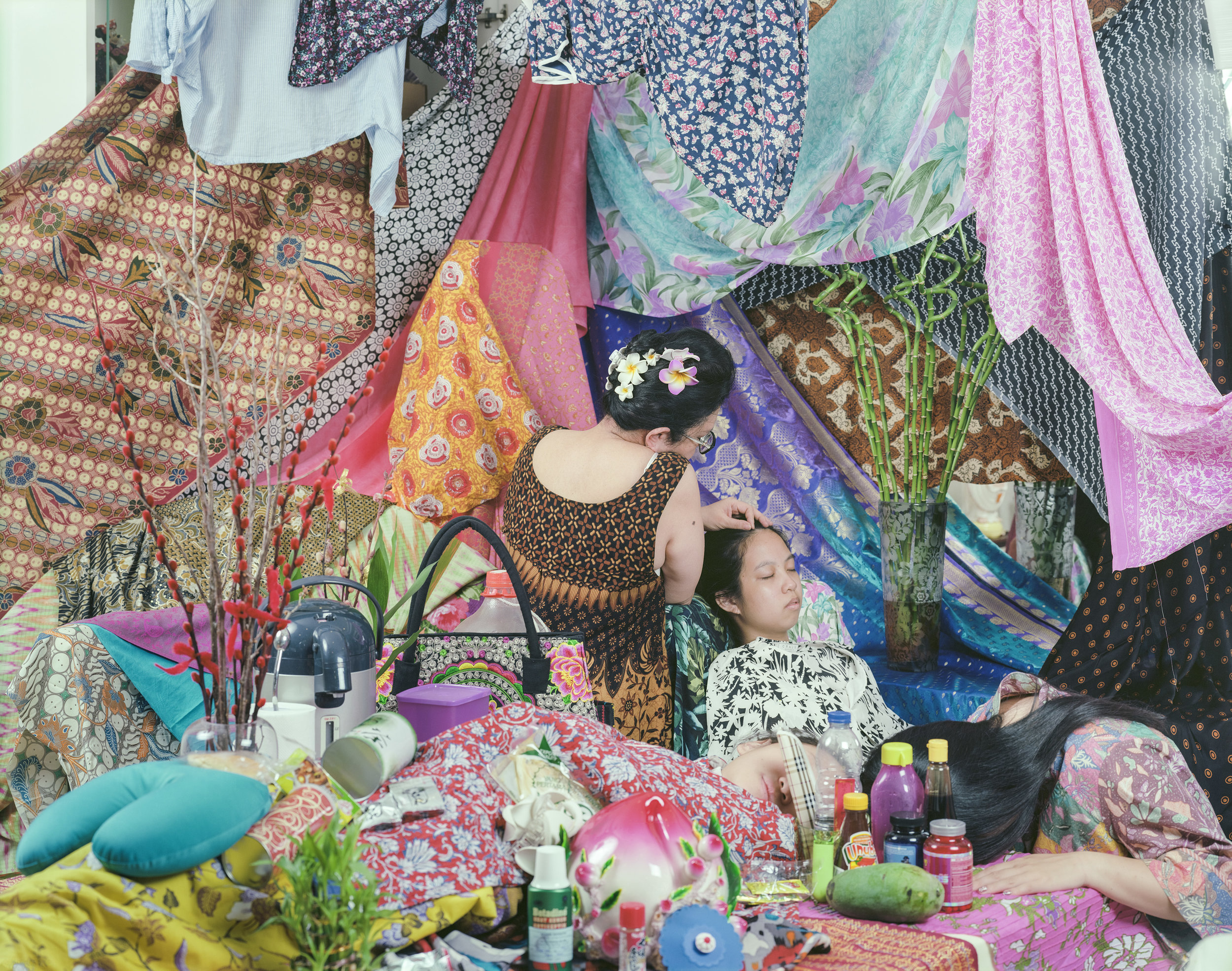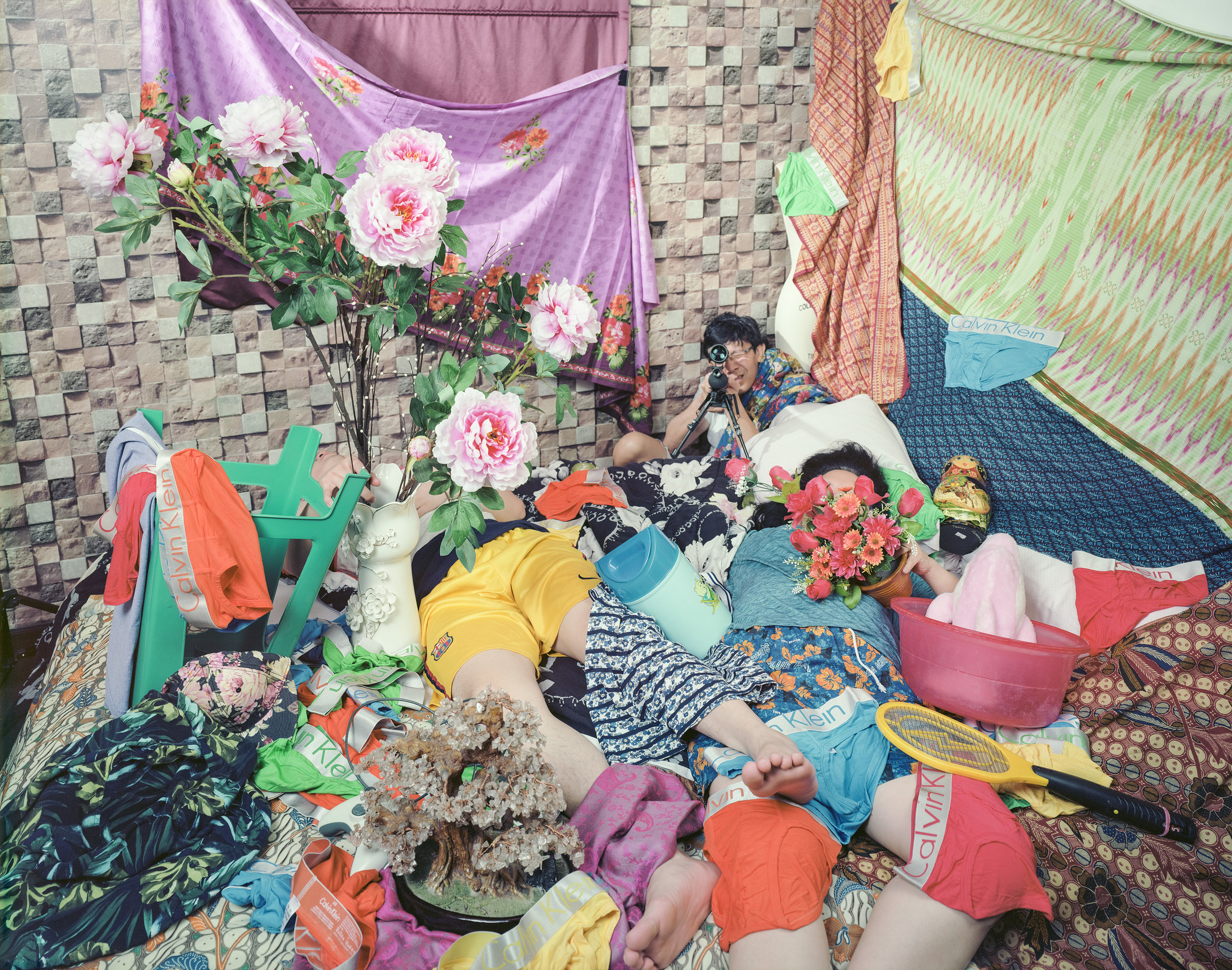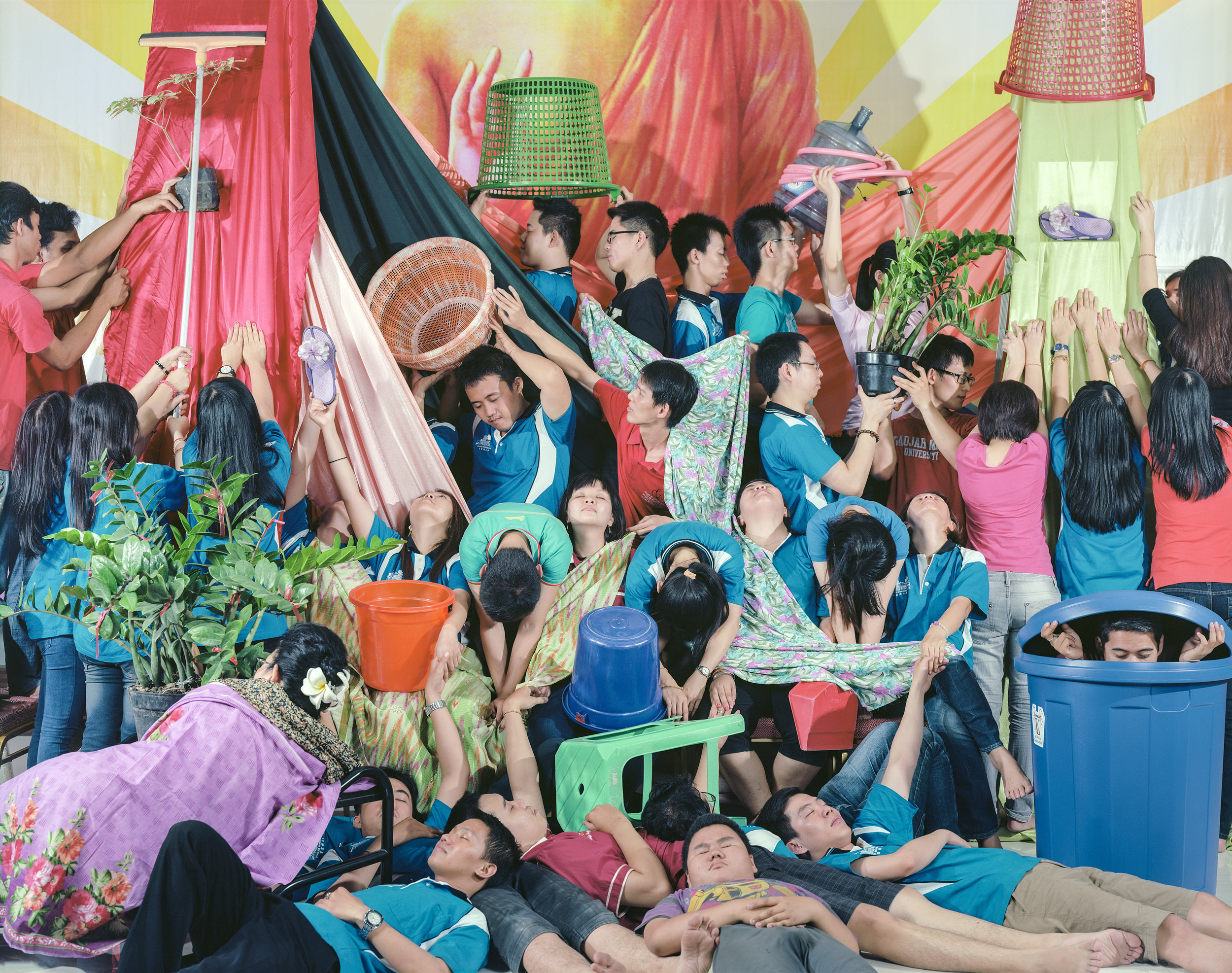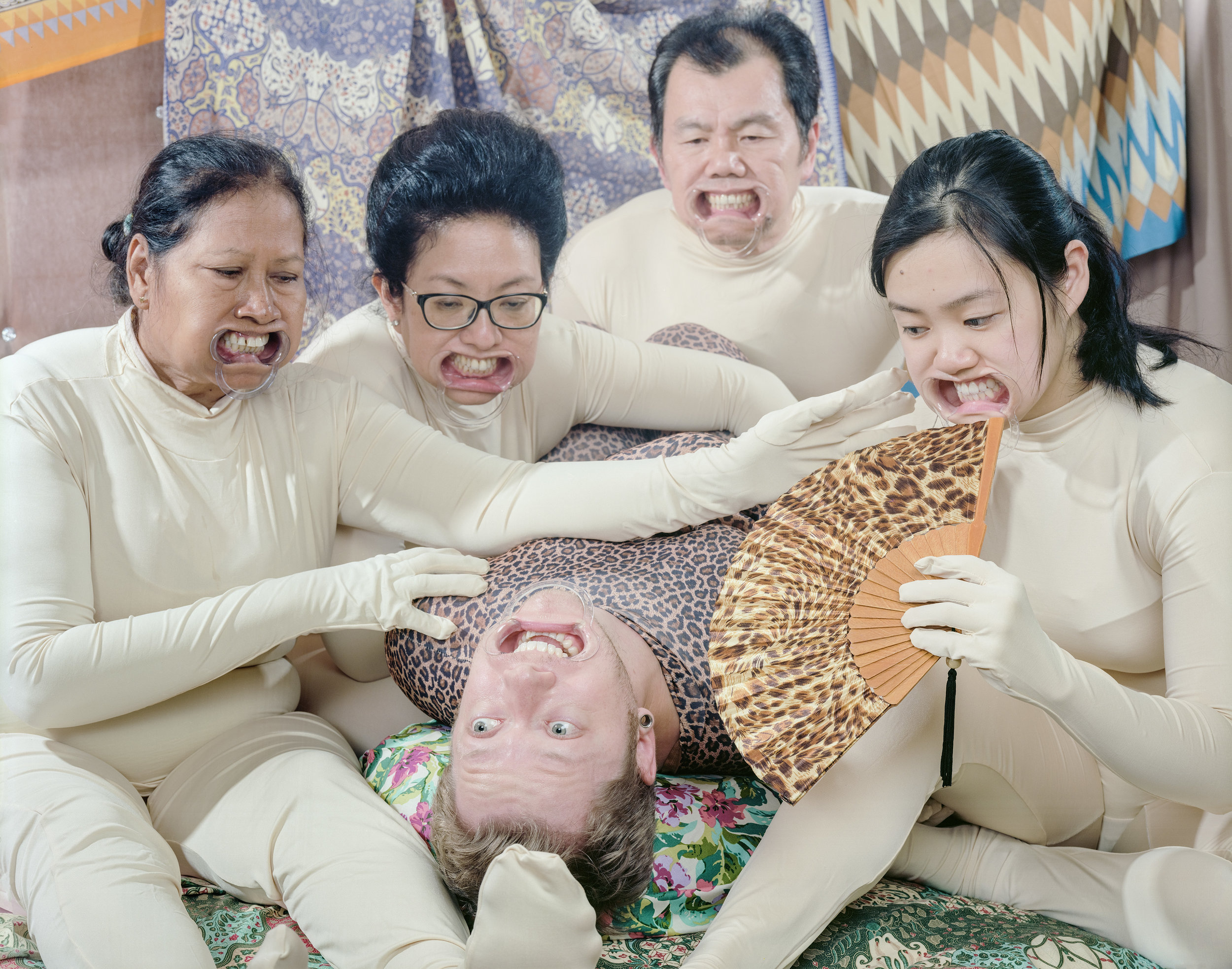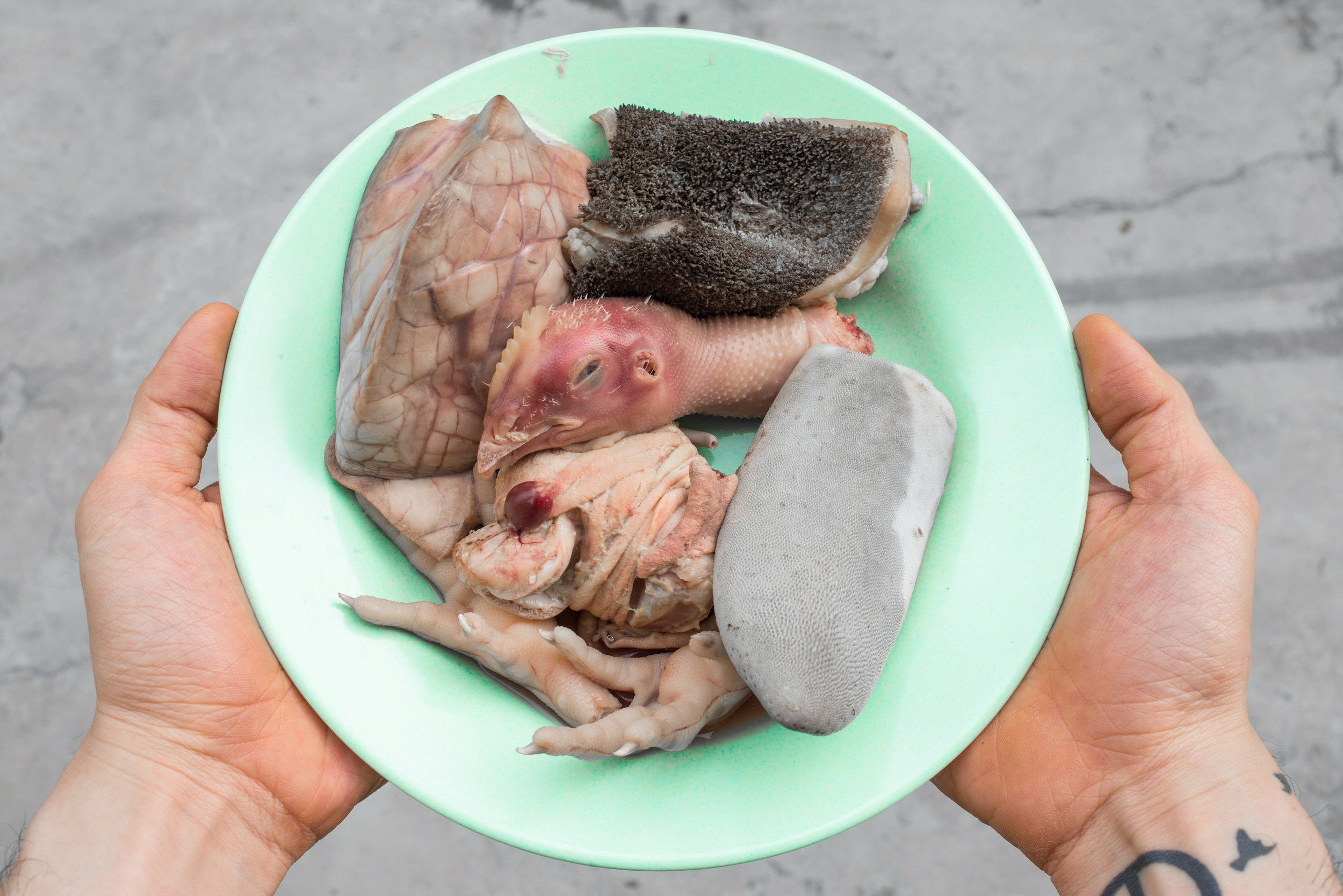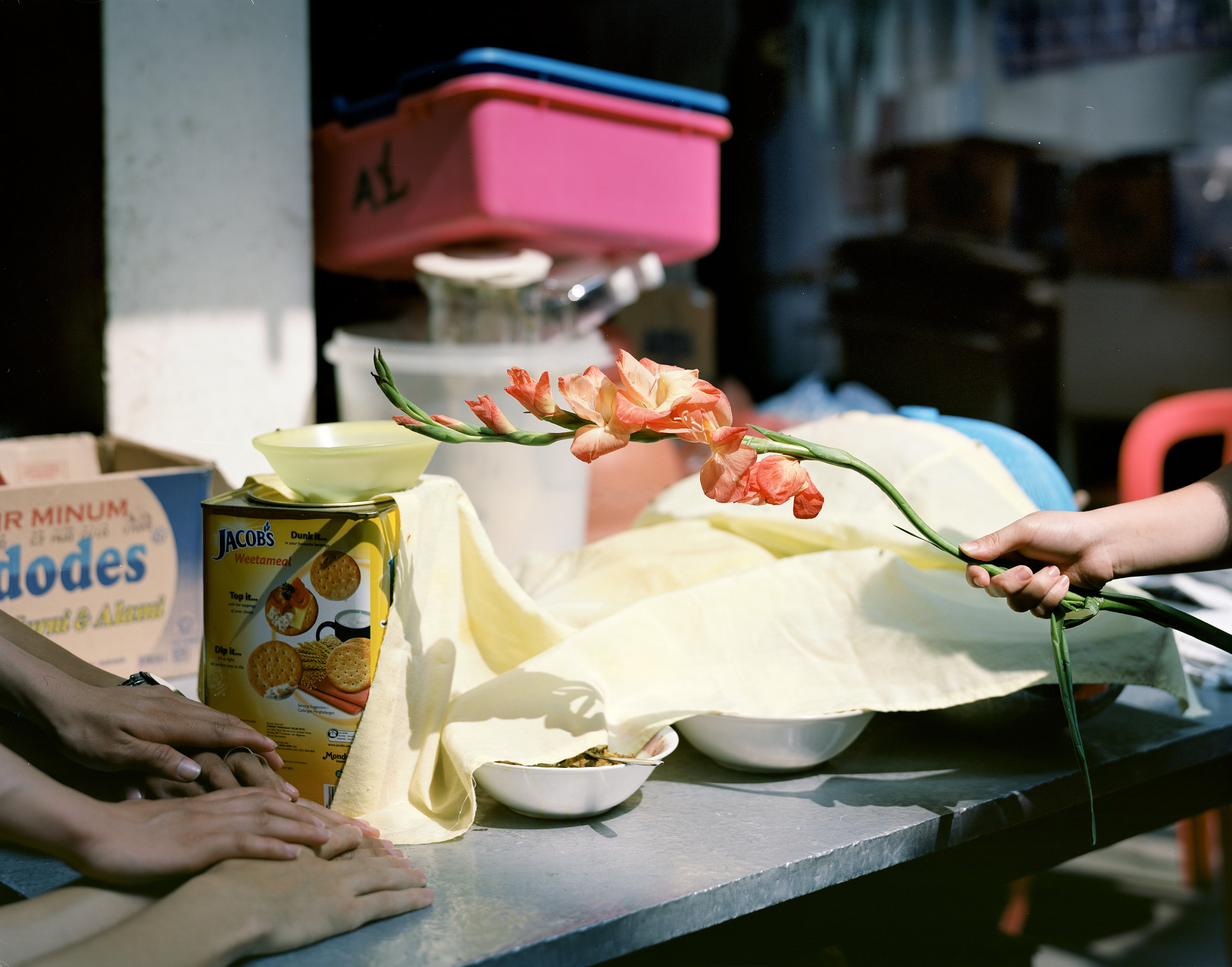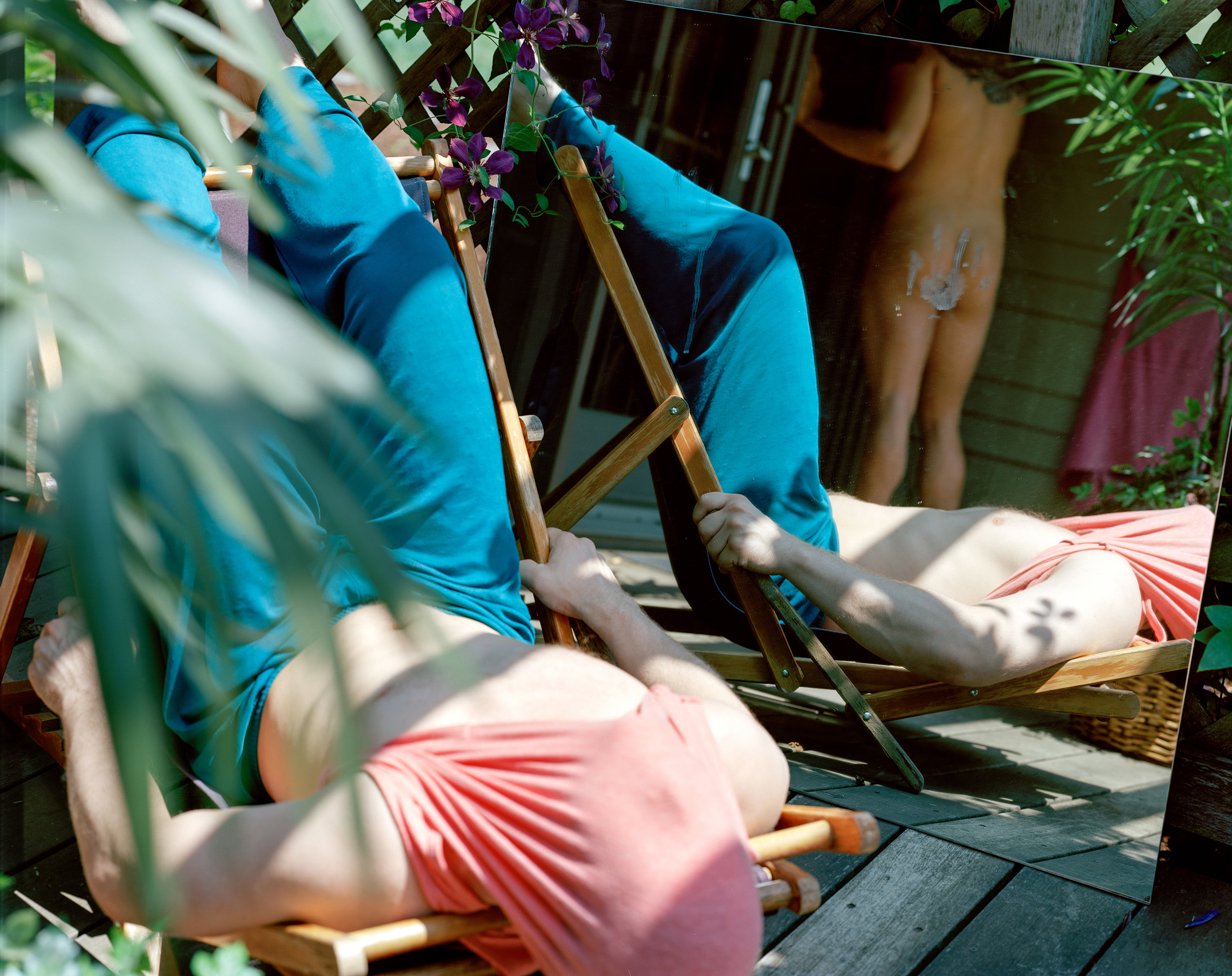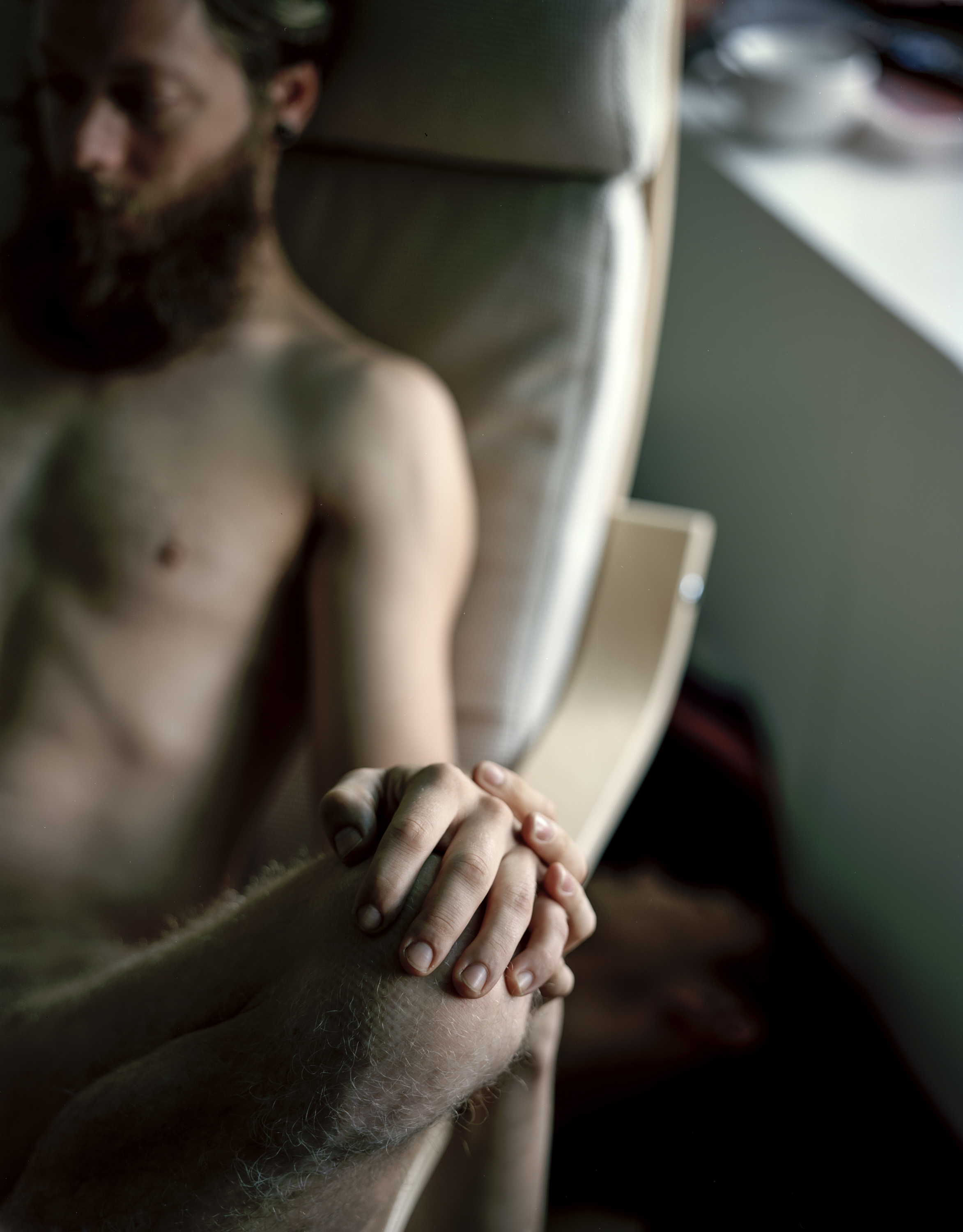Q&A: Leonard Suryajaya
By Hamidah Glasgow | September 22, 2016
Leonard Suryajaya's work explores the intricate and complicated layers of selfhood in the context of cultural background, intimacy, sexual preference, and personal displacement. Influenced by the cultural milieu of inter-ethnic relations in Indonesia, he utilizes photography, video, along with elements of performance and installation. Through the use of personal narrative and story telling, his work challenges and deconstructs the perspective we use to scrutinize and observe our roles in a transnational global world.
Leonard Suryajaya received an MFA from the School of the Art Institute of Chicago in 2015 and BFA from California State University, Fullerton in 2013. Recent exhibitions include Irvine Fine Arts Center, CA; Expo Chicago, IL; Chicago Artist Coalition, IL; The Center for Fine Arts Photography, CO; Roy G Biv Gallery, OH. Leonard’s work is in the collections of The Art Institute of Chicago; Joan Flasch Artist Book Collection and his publications include Lenscratch; Chicago Tribune; Chicago Magazine; South Side Weekly. He has recently lectured at the Society for Photographic Education 2014 National Conference, MD and the Society for Photographic Education 2016 National Conference, NV. Leonard has been awarded the New Artist Society Award; James Weinstein Memorial Fellowship; Claire Rosen and Samuel Edes Prize for Emerging Artist; and the Robert Giard Foundation Fellowship.
HG: Each time I view your work, I find myself having a different experience. I see something new or experience the image or video in a different way. The intricacy of the compositions creates layered meaning and experience. I believe this has much to do with the intimate nature of your imagery and the purposeful confusion inherent in your work. Would you say that is accurate?
LS: I celebrate the viewer’s authority in responding to my work however they want and can. I hope in the hospitality and bewilderment I share with them, they find the eagerness to hear my story and have an exchange about what it means to strive for a just society.
From my background growing up in a state of “placelessness”, I realize that mortality is the only thing that’s constant. To acknowledge living experiences as being in a constant flux and filled with alternatives is what I strive to achieve in my work. I set out to create visual experiences that host both a sense of chaos and harmony in them.
To be intrigued, to pick up, overlook and foresee certain aspects of my work is an invitation that I constantly extend to the viewer. If I expect the viewer to get and understand my work in one encounter, that will speak to how basic and insignificant I am.
HG: The words chaos, harmony, bewilderment, all resonate to me, hospitality is a word that I’d like to hear more about from you. Are you referring to the hospitality that your family and friends are showing you in their vulnerable participation in the images and videos? I feel a great deal of vulnerability on the part of your family, partner, friends, and ultimately with you. There is trust and loyalty evident in your work. Is that what you mean by “hospitality”?
LS: I work from a place where I hold firmly that art is a conduit for social exchange. The relationships between the viewer and my subjects, the viewer and me and my subjects and me are equally important. The act of generosity is something that I’d like to maintain and foster.
Art making affords me a sense of freedom and power that I might not otherwise have full access to. The realization that I can share this experience with others by inviting them to participate in my work or inviting participation through seeing invigorates me.
Being able to experience such diversity and adversity is a privilege. I’m conscious of the fear one might have about the idea of other people that they don’t know. That’s why the use of humor, intimacy, and purposeful confusion is really important to me. I want to prick, disorient, and open up different ways of seeing other people. And hopefully in that process I get to forge a sense of relationship between the viewer and the subjects.
HG: Tell me about the “American Anthem” video? I would like to hear more about the mouthpieces and the intent?
LS: American Anthem came to fruition when I was a visiting artist at Nanyang Zhi Hui school in Indonesia this past winter. Throughout my time there, I was so grateful that I could share my work and host conversations surrounding self-identity, culture and heritage, discrimination, misleading notions of social superiority and trauma with the students and teachers. From that experience I became inspired and energized in wanting to share the experience of art making with the them.
I like to think of the piece as an absurdist theatre where the viewer is the subject of the spectacle. It’s a trick that we pulled on the viewer in seeing how bizarre the concept of asking someone to do their best while limitations are put on them consciously or unconsciously.
It was such a great experience. We had so much fun laughing and working together in fulfilling a goal. To me, the most important thing that I’d like to show the students in the process is how varied and non-conforming one could be in being in the world. Despite the strict social predilections that they are conditioned to employ, it’s important that they acknowledge that social convictions are governing agents that sometimes separate human being from one another.
I also told them to finish their homework if they wanted to keep hanging out with me outside of their regular class time to make art. And that I was super super good at math and science until I forgot all about them and found something that makes me feel so good to be alive and working.
HG: Is the mouth piece in any way related to what a Finnish friend of mine called the “ridiculous American smile.”? That there is an expectation of smiling that is in many ways bizarre?
LS: Haha! That connection wasn’t necessarily there when I was in the process of thinking about and making the work. But that is a valid response. It is really fascinating to think that customs sometimes make us do unnatural things, which then are used as a foundation to hinder our ability to experience and get to know one another sincerely.
HG: Pushing physical boundaries is important in your work, boundaries between your family and their comfort zones as well as with others in your work. I’d like to hear more about this and how it affects the viewer’s boundaries and ability to push through their own?
LS: The subjects in my work are really important to me. The work that I make with them is not merely a photograph of persons/people and that the subjects are simply ornaments of my photographs. It is vital that they participate and work with me because it is essentially our work together.
It is vital that I acknowledge their participation and not further strip the sense of authority they have. They are actors in a setting that we build together. They are always active and the result is not a photograph of them. It is a portrait of our exchange and interaction.
For the viewer, that’s exactly what I want to communicate with my work. Acknowledging their burning desire in being able to comprehend who they are seeing and then start shifting their questioning to the gestures and other visual cues that are present when they find it impossible to certainly classify the subjects in the molds they have for them in the initial exchange.
Also, my family does complain about holding poses for too long due to the large format process I employ in making the photographs. But throughout the experience of making work with them, I find that they just like to complain and be heard. They would do everything I ask of them because they love me. Expression of love and endearment is not customary in my background, so I guess we show love by putting each other in a state of discontent and just suck it up. It’s such a strange and sadistic notion of love.
HG: Love can take many forms, in the video Rupa, there is an exchange of love, trust, and intimacy that also nods to worship, tradition, customs and ritual. In the setting of spectacle, are you re-writing or re-imagining how love can be outside of generalized norms?
The first time I ever verbally told my family that I love them was about three years ago when I came out to my mom and sister. The fear of them objecting and rejecting prompted me to say it. I was afraid that it would be the last time that I got to see them because I wasn’t sure how they would take it.
It was right before I left for the airport flying back to Chicago, after my grandfather’s cremation.
It took me 25 years of my life and a death in the family to occupy that word. I’m unsure if I am ready or able to respond to the question of whether I was re-writing or re-imagining how love can be outside of generalized norms with Rupa.
HG: The first section of Lesser Than Three is quite brilliant. This is an intimate interaction that verges on the surreal given the camera angle, how did this work come to be? What do you hope the viewer takes away from viewing the piece?
LS: The first section of “Lesser than Three” is of my partner, Peter. I think it was about 3 months into us knowing each other, me shaving his year-old beard, and shoving fabrics up his ass for photographs. We were in bed and I could sense that we were getting restless about what all of that intimacy was about.
Also, I met him in my first year of grad school where I was very frank about what the reality of the relationship would be. I posted online, “I will hook up with you if you let me photograph you nude as my lover." I was genuinely curious about how deceiving the lens based medium is. Being quite cocky with what I could do with lighting and composition, I was so sure that I could make any stranger I met online look like my intimate long time lover. I guess I ate the dust with this one (Peter).
It is quite surreal, still. Every time I see it, it reminds me how awkward, bossy, and powerless I was. I hope the viewer gets a sense of my pride and struggle. It was my plea for help but also an invitation for the viewer to find comfort in the state of uncertainty.
HG: There are several images/video clips that bring the butt or ass front and center. Your reference to " shoving fabrics up his ass for photographs" has me thinking about how taboo this subject is in conversation, media, and even photography. We mostly deny that we have them, yet your work doesn't. Is this about being real, pushing boundaries, and pushing comfort around intimacy? I'm trying to relate this to being shy yet this is quite the opposite. When I think about this then I want to reconsider your work again, what else am I missing in the intricacies of your complex set-ups?
I come from a really strict setting where religion, culture, and social norms provide the convictions that give meaning to existence. The luxury of leaving all of that behind means that I now have to be vulnerable and bold. I strive to challenge and investigate inconsistencies in the way meanings and values are made.
The ass is a conundrum. I can’t figure it out. It’s a site of pride, it’s a site of vilification. It’s a site of desire – it’s a site of putrefaction. It’s a site of care taking – it’s an illicit site.
I guess one way to go about it is by exploring ass play.
HG: The first time I viewed that video was at SPE in Las Vegas, it blew my mind. That was true when I watched it again and again. Such vulnerability, honesty, and again that camera angle. Glad that you met Peter, so we get to meet him and in doing so, get to know you better.
Peter is great. We are both learning what it means to be civilized. We share similar experiences growing up queer in a strict and suppressive setting.
When I came out to my mom, she told me to not tell my dad. I think a lot about that and I’d like to respect her request. My home country is restrictive towards the notion of queerness. It burdens me to know that they are the ones who would be dealing with the negative impact of me being queer, without a wife, without kids, and not so great with having a steady life.
HG: I notice that the writings in From Mom to Me are in Bahasa. Is this due to the Indonesian bias against Chinese? Did you speak Mandarin or Cantonese at home or was your native language Bahasa? How does this play into the work? Language and food are such essential parts of our cultural make-up, I wonder about these things for you and your family?
LS: My mother is truly the most powerful, resilient, and inspiring person that has helped shape me today. When she was about 5 years old, she witnessed the persecution of ethnic Chinese group in Indonesia in an effort to eliminate communism. When I was 9, with my dad, she took me and my sister away to neighboring countries to avoid similar social outrage in the wake of the economic collapse. As a mother of a queer son, who calls Indonesia home and doesn’t desire the freedom she has afforded me, she is more than a mere human to me.
I speak Hokkien, which is a Chinese dialect, with my family. Bahasa is the main language in Indonesia. During my parents’ childhood, the government banned any display of Chinese culture, language and rituals. They had to change their names from Chinese to Indonesian, and pledge their allegiance to the Indonesian government, along with a special identification card despite being born there after Indonesia was an independent and sovereign country.
Being a second generation Chinese Indonesian, I read and write in Bahasa and speak Chinese. It was my persistence in wanting to leave that led me to want to learn and be really good at English.
“From Mom to Me” speaks to the sense of distance in our relationship. Language is rightly one of the impression of detachment, yet it is also an aid to compassion. Being able to acknowledge and work with the variations in which we use social apparatus like language, meaning and food is an invaluable support for me in employing visual language as a powerful weapon in dealing with themes of social unrest.
HG: Your mother sounds like an amazing woman. This makes me think about the complexities of families and that your images also clue us into the complex loyalty that you speak about. That your family loves you and will do what you ask. Thank you for your time and for sharing your work with us.
Leonard Suryajaya will be giving an artist talk on September 23 at noon during the Filter Photo Festival.
Suryajaya will have a exhibition during Expo Chicago at Chicago Artists Coalition with a talk on Friday September 23.
He will also be giving an artist talk on October 22 during Medium Photo Festival in San Diego.
